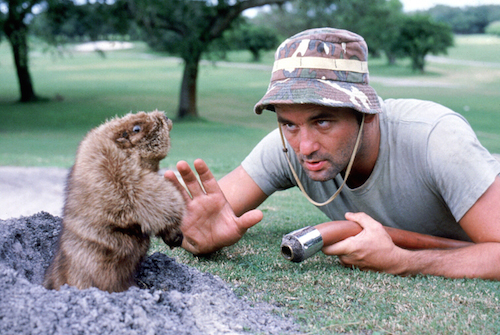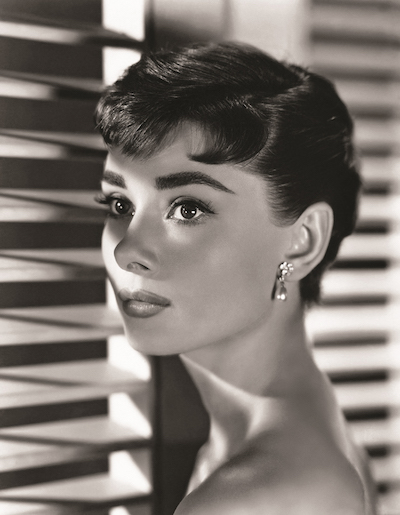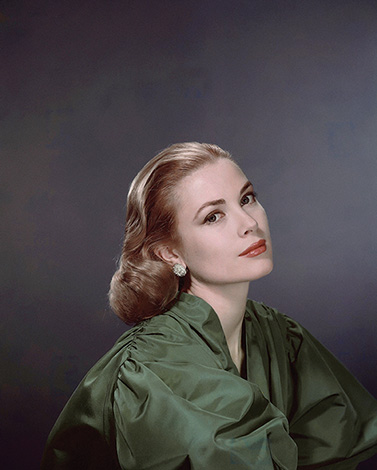In celebration of Memoir March, we asked the authors of eight groundbreaking memoirs what readers will love about their life stories—and which parts are even stranger than fiction.
 Dolly Alderton, author of Everything I Know About Love
Dolly Alderton, author of Everything I Know About Love
Dolly Alderton recounts her many mishaps—including a drunken evening when she thought she was in Oxford, not London—through essays, satirical emails and recipes. Alderton isn’t afraid to share unflattering moments or to laugh at herself, and readers may find solace in realizing they aren’t alone at the party. (read the full review)
What do you love most about your book?
I am happy about how truthful it is—which makes it uncomfortable for me to read back sometimes, but it’s a really honest account of an ebullient, rocky, unpredictable period of my youth that a lot of people go through, and I wrote it truthfully.
What kind of reader do you think will most enjoy your book?
Someone who is after riot and revelation in equal measure from an imperfect antiheroine.
What is one thing in your book that’s true that readers may think you made up?
That I took a taxi across 100 miles at 4 a.m. Both me and my student bank account overdraft wish that was a made-up anecdote.
 Barry Sonnenfeld, author of Barry Sonnenfeld, Call Your Mother
Barry Sonnenfeld, author of Barry Sonnenfeld, Call Your Mother
In this funny, wry and thoroughly entertaining memoir, the legendary cinematographer and director does more than name-drop or recall Hollywood vignettes. Barry Sonnenfeld is, above all, a storyteller, and while his own journey from a skinny, French horn-playing kid to a successful director drives the breezy narrative, he takes time to bring supporting characters irreverently to life. (read the full review)
What do you love most about your book?
That people tell me they laughed out loud reading it.
What kind of reader do you think will most enjoy your book?
Readers looking for a surprisingly good time. Or a sad time. Anyone interested in films and how they ever get made.
What is one thing in your book that’s true that readers may think you made up?
There are so many unbelievable but true things: Being paged at Madison Square Garden during a Jimi Hendrix performance; surviving a plane crash; surviving my mother’s cooking; being bar mitzvah’d in a Catholic church; selling M.C. Hammer my ’62 Lincoln Continental; becoming a successful director.
 Erin Khar, author of Strung Out
Erin Khar, author of Strung Out
Any book about addiction is actually a book about feelings and the lengths that people who are suffering will go to avoid feeling them. Erin Khar’s memoir is a compassionate account of her illness and will surely be the gold standard for women writing about heroin addiction. (read the full review)
What do you love most about your book?
What I love most about my book is the way readers have told me they connect with the story. For people who’ve struggled with addiction, it helps them feel seen, feel less alone. For people who have not experienced addiction, it helps them understand addiction in a way they hadn’t before.
Readers have also told me how much they found they could relate to, and that surprised them. I love that! I wanted the narrative to reflect a human experience, to present addiction not as an aberration but as a human condition, one that 2 million Americans struggle with. Reframing how we view addiction will go a long way in helping people.
What kind of reader do you think will most enjoy your book?
Definitely memoir readers and fans of addiction and recovery narratives. But beyond that, anyone who is interested in understanding what is at the heart of the opioid crisis.
What is one thing in your book that’s true that readers may think you made up?
I think it’s hard for people to believe that I was able to hide my addiction for as long as I did, but the people who were closest to me were absolutely shocked when I went to rehab. In my teenage years, I didn’t display the “warning signs” of addiction. I got straight A’s in school, participated in lots of extracurricular activities and had plenty of friends. We have ideas about what a drug addict looks like or acts like, but the truth is addiction can happen to anyone, can look like anyone.
 Alex Halberstadt, author of Young Heroes of the Soviet Union
Alex Halberstadt, author of Young Heroes of the Soviet Union
Beginning with childhood memories of his parents’ troubled marriage and divorce, resentment toward his absent father and embarrassment over grandparents who made no effort to conceal their foreignness, Russian American author Alex Halberstadt slowly pulls away the curtain draped over his family’s unhappiness. What he finds is startling: a grandfather who served as a bodyguard to Stalin, and who became known to Halberstadt as a fragile man who still wrestles with the truth of the atrocities he at least witnessed, if not perpetrated. (read the full review)
What do you love most about your book?
One of the themes my book deals with is the relationship between personal lives and the larger currents of history, and what I love is the way my book braids together personal stories with episodes from Russian history while telescoping back and forth in time. For me, nonfiction is always most compelling when it’s grounded in the specifics of people’s stories.
What kind of reader do you think will most enjoy your book?
I think my book would particularly appeal to readers interested in family stories, 20th-century history, Russia, the Holocaust, immigration and intergenerational trauma.
What is one thing in your book that’s true that readers may think you made up?
My grandfather was very likely Stalin’s last living bodyguard and for years operated as a double agent, splitting his loyalties between Stalin and the head of the Soviet secret police, Lavrenty Beria. Some days it seems unbelievable to me, too.
 Evan James, author of I’ve Been Wrong Before
Evan James, author of I’ve Been Wrong Before
The ragged ways we fall in and out of relationships are at the center of these dazzling autobiographical essays, as Evan James ponders the complexities of love, lust, sexuality and longing against the backdrop of his world travels. (read the full review)
What do you love most about your book?
I love that I set out to write a lighthearted book of comedic personal essays and that, over the course of years spent tinkering with them, I upended many of my own assumptions about myself and my loved ones in the process. As I say in one essay, “We settle for so little knowledge of each other.”
What kind of reader do you think will most enjoy your book?
A reader with an open mind and a sense of curiosity about life in all its absurdity. A reader who wants to have a laugh while reading about world travel, past lives, psychic mothers, drag queens, drugs, dating, ghosts, day jobs.
What is one thing in your book that’s true that readers may think you made up?
Readers might find it incredible that I’ve had so many fascinating love affairs—or that I was, apparently, Lord Byron in a past life.
 Philip Kennicott, author of Counterpoint
Philip Kennicott, author of Counterpoint
Philip Kennicott’s engrossing memoir explores his impressions of his late mother. But even more than these grief-stricken reflections, it is Kennicott’s intimate insights into the way Bach’s music speaks to all our lives as they wind their way toward our inevitable deaths that makes this book an unforgettable triumph. (read the full review)
What do you love most about your book?
I thought I was going to write a book about Johann Sebastian Bach and his magnificent keyboard work “The Goldberg Variations,” but as I started writing, it became a book about my mother and the grief I felt when she died almost 10 years earlier. I wasn’t expecting that. I’m an art critic who writes for a daily newspaper, and I try not to use the first-person voice too often. But the process of writing this memoir kept drawing me ever deeper into memory and forced me to think about what had been a complicated and difficult relationship. I kept wondering, can anyone possibly be interested in this? When I was finished and showed the manuscript to a few people, they said it was the family part they enjoyed most. That was a relief, because I struggled to weave together anecdotes about my childhood and the original idea for the book, which was a memoir about learning how to play a complex piece of music. I suppose I shouldn’t have been so surprised. If we really dig into the emotions we feel in the present, we find that they have deep roots in our past. Writing about Bach, and my struggles with his demanding music, inevitably led me back to some of my earliest memories, to a time when my mother and I used to make music together. It refreshed things that had been buried for a long time, mostly in a good way.
What kind of reader do you think will most enjoy your book?
If you took music lessons as a child or are studying an instrument as an adult, I think you will love this book. And I hope readers who are interested in memoir and have a general curiosity about music will find something of interest here. I tried to write about music in ways that are specific but not technical, and to explain why Bach’s Goldberg Variations is one of the enduring masterpieces of Western music. But this is also a book about something we all know or will know in life: the pain of losing someone close to us. As I write in the last chapter, grief brings us meaning, it makes life more intense, and it makes us impatient with silly, trivial things. It binds us to other human beings. I hope those things are of universal interest to readers.
What is one thing in your book that’s true that readers may think you made up?
There’s a chapter in my book about a month I spent alone in an old house practicing the piano and reading. Except for a few trips to the grocery store, I saw no one during that period, and the isolation was seductive. I realized after a few weeks that I was thinking more about my mother than I had at any other point in my life, thinking about her more sympathetically and working harder to piece together who she had been and why she had been so unhappy. It was an emotionally volatile few weeks. And one day, as some of the darker clouds in my head were lifting, I went on a long walk and heard a strange flapping in the grass along the roadside. It was a bird caught up in some kind of netting or plastic. I managed to free it, and it flew away. I thought, what a cliché. And then I thought, well, it happened, and it is the sort of story my mother, who was a passionate bird-watcher, would have loved. So I included it in the book.
 Cathy Park Hong, author of Minor Feelings
Cathy Park Hong, author of Minor Feelings
Cathy Park Hong offers a fierce excavation of her hardships as an Asian American woman living and working as a poet and artist. Historical traumas and cultural criticism are woven through this erudite collection of personal essays on family, art history, female relationships and racial awareness. (read the full review)
What do you love most about your book?
I love it because it’s my most honest, vulnerable and bravest book to date. It’s also my personal intervention against what Chimamanda Ngozi Adichie calls the “single story,” which is basically the same tired racial narratives that we hear over and over again that comfort us rather than makes us rethink how we perceive others.
What kind of reader do you think will most enjoy your book?
I’m writing directly to Asian Americans, rather than writing about Asian Americans to a white audience. But I think so many people would enjoy this book: other people of color, immigrants, women, millennials, the curious-minded, people who don’t mind being challenged.
What is one thing in your book that’s true that readers may think you made up?
That I had a brief and unfortunate foray into stand-up comedy.
 Marcelo Hernandez Castillo, author of Children of the Land
Marcelo Hernandez Castillo, author of Children of the Land
Marcelo Hernandez Castillo’s powerful, poetically infused memoir adds a soul-searing voice to the canon of contemporary immigration narratives. Undocumented as he crossed over the desert into California as a child, temporarily blind from the stress, he grows up riddled with the shame of his family’s invisibility. (read the full review)
What do you love most about your book?
I love that I was given the freedom to cordon off sections, or chapters, or even single scenes as complete units in their own right and, more so that they are all of different sizes. Something special happens when text is placed alone in a sea of blank space like a tiny island made of language.
What kind of reader do you think will most enjoy your book?
I don’t think I could say who will enjoy my book most, but perhaps I could say who might get the most out of my book, and for different reasons. I am not afraid of critics looking from the outside in (I can shut away that noise) but rather of disappointing people who share similar experiences with me.
What is one thing in your book that’s true that readers may think you made up?
I think it might be difficult for readers to accept how little healing there is in the book, and they may think I cherry-picked only the most emotionally difficult parts of my life with the belief that it would automatically translate into empathy for the reader. I truly wish that were the case, that somewhere out there, I’m living a life where I’ve moved on and put all of this behind me. I was always keenly aware of presenting joy that is at times enmeshed with grief.














 Dolly Alderton, author of
Dolly Alderton, author of  Barry Sonnenfeld, author of
Barry Sonnenfeld, author of  Erin Khar, author of
Erin Khar, author of  Alex Halberstadt, author of
Alex Halberstadt, author of  Evan James, author of
Evan James, author of  Philip Kennicott, author of
Philip Kennicott, author of  Cathy Park Hong, author of
Cathy Park Hong, author of  Marcelo Hernandez Castillo, author of
Marcelo Hernandez Castillo, author of 














